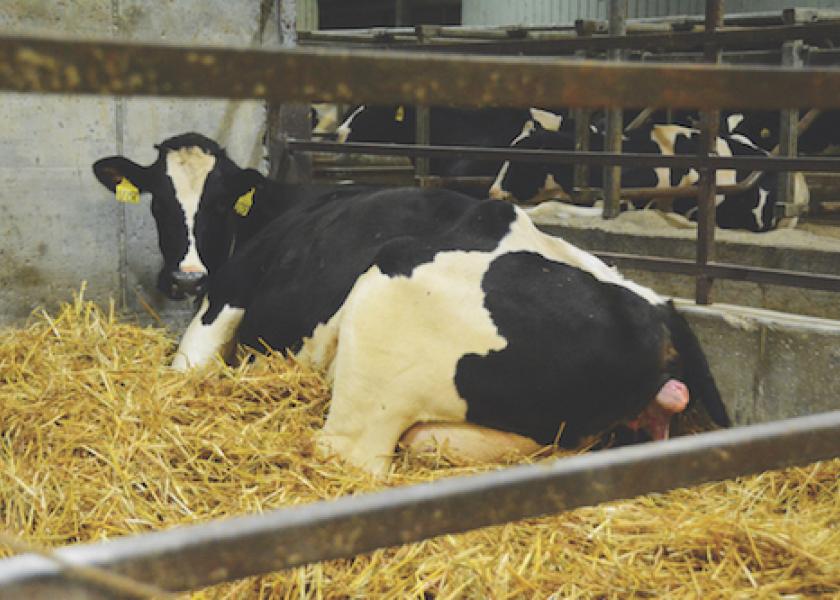Better Understanding the Mystery of Metritis

Affecting even the healthiest cow on the farm, metritis, a metabolic and infectious disease experienced in transition animals, is a common illness that can have negative impacts on milk production and future pregnancy rates.
According to a University of Kentucky extension article, approximately 12% of freshening animals experience some degree of metritis after calving, with the incidence rate being greater in those that experience a difficult birth, have twins or have a retained placenta. In a DAIReXNET webinar, Dr. Stephen LeBlanc, DVM, from the University of Guelph discussed the factors that contribute to the occurrence of metritis along with the impact of the disease.
Defined as a foul smelling, reddish brown discharge from the vulva, LeBlanc explained that all cows experience some form of bacterial contamination within the uterus after calving. E. coli is commonly the initial bacterial contaminant associated with metritis.
Once infected, cows with severe metritis had lower pregnancy rates at first service and by 120 days in milk. Additionally, in both mild and severe forms of metritis, cows experienced lower milk production. This especially held true in more mature animals, as they produced an average of 600 lbs. less milk compared to a healthy cow.
LeBlanc noted that only 10% to 45% of cows who are diagnosed with metritis have a fever. Before treating the uterine disease, LeBlanc suggests consulting with your veterinarian to develop a treatment protocol. Antibiotics can be used to help shorten the length of the infection, however, most animals who were treated were cured 7 to 12 days after treatment.
Although metritis is a common metabolic disease, LeBlanc reported that there are steps one can take to help offset its occurrence.
Research suggests animals who spend less time at the feedbunk and that had lower dry matter intakes prior to calving had an increased risk to developing the infection. Additionally, cows who experienced subclinical hypocalcemia also had a greater chance of metritis. Calcium is important for uterine muscle contractions and for the best immune response to fight off bacterial challenges, according to LeBlanc.
Watching for cows who show these symptoms could reduce the prevalence of metritis on your operation.
For more articles like this, read:
- Longer Lactations Could Improve Cow Fertility
- Study: Subclinical Milk Fever Linked to Metritis
- Fresh-Cow Behavior May Signal Metritis







